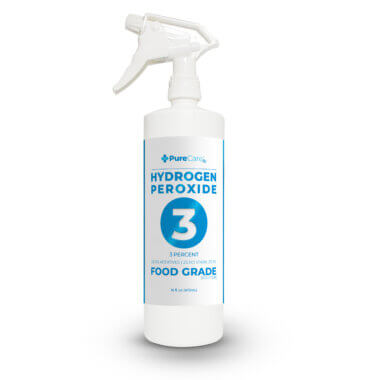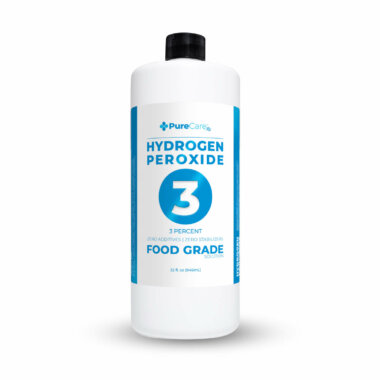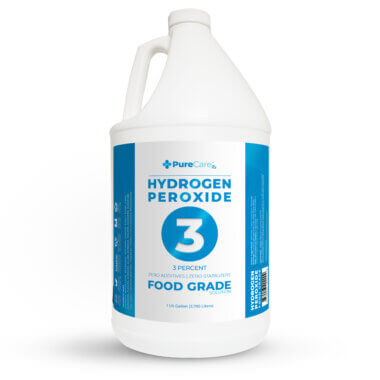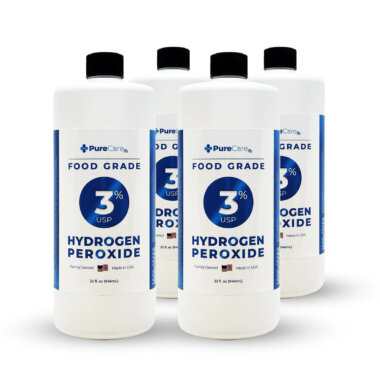3% Hydrogen Peroxide
-
Food Grade Hydrogen Peroxide
3% Food Grade Hydrogen Peroxide Spray Bottle 8oz
$8.99Original price was: $8.99.$6.99Current price is: $6.99. Add to cart -
Food Grade Hydrogen Peroxide
3% Food Grade Hydrogen Peroxide Spray Bottle 16oz
$10.99Original price was: $10.99.$8.99Current price is: $8.99. Add to cart -
Food Grade Hydrogen Peroxide
3% Food Grade Hydrogen Peroxide Solution 32 oz
$14.99Original price was: $14.99.$9.99Current price is: $9.99. Add to cart -
Food Grade Hydrogen Peroxide
3% Food Grade Hydrogen Peroxide Solution 1 Gallon
$29.99Original price was: $29.99.$19.99Current price is: $19.99. Add to cart -
Food Grade Hydrogen Peroxide
3% Food Grade Hydrogen Peroxide Solution 1 Gallon Subscription
From: $19.99 every 3 months Select options This product has multiple variants. The options may be chosen on the product page-
- Every Week
- Every 2 Weeks
- Every 3 Weeks
- Every Month
- Every 2 Months
- Every 3 Months
- Clear
-
-
Food Grade Hydrogen Peroxide
3% Food Grade Hydrogen Peroxide Solution 32 oz – 4 Pack
$29.99Original price was: $29.99.$19.99Current price is: $19.99. Add to cart
What is 3% Hydrogen Peroxide?
3% hydrogen peroxide is a clear, colorless liquid commonly used for maintaining cleanliness and promoting a hygienic environment across various surfaces. Composed of water and 3% hydrogen peroxide, it’s a less concentrated form of this powerful oxidizing agent, which makes it versatile for a range of industrial and chemical uses.
This solution is effective for purifying diverse surfaces and for lightening materials. It works by releasing oxygen when it comes into contact with organic substances, effectively neutralizing a range of microscopic elements.
Though generally regarded as safe for the purposes for which it’s designed, care is needed during its handling, including steering clear of sensitive areas. It’s essential to adhere to all best practices and recommendations for its secure and effective application.

Is 3% Hydrogen Peroxide Safe to Use?
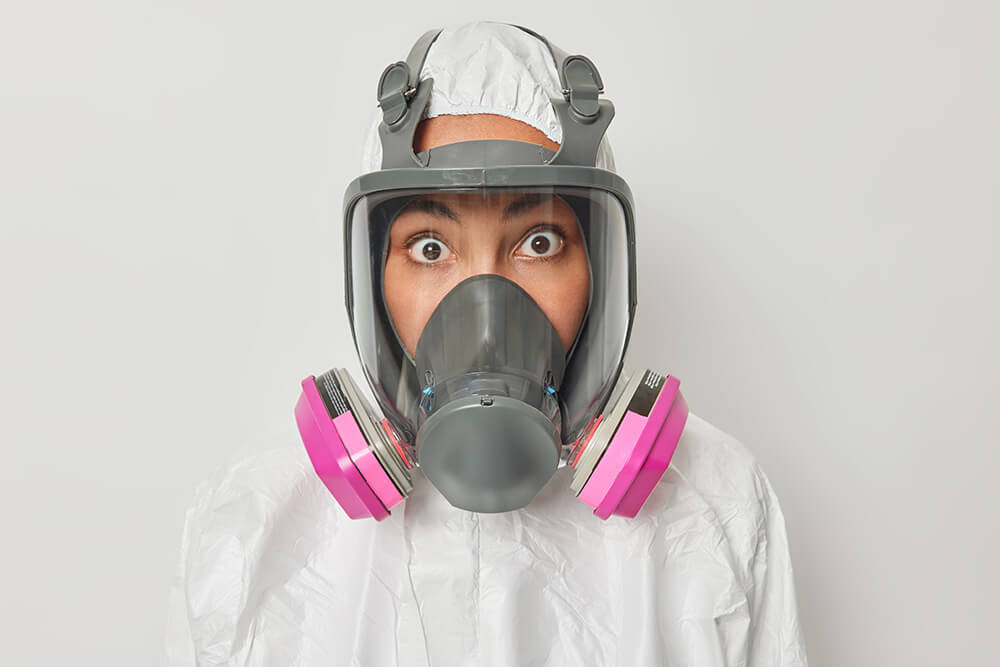
3% hydrogen peroxide is generally seen as safe for use in maintaining a clean household environment. That said, it’s crucial to exercise caution and adhere to recommended usage instructions to ensure safety.
When utilizing 3% hydrogen peroxide for cleaning, one should refrain from combining it with other chemical agents to prevent hazardous interactions. Keeping the solution away from the curious hands or paws of children and pets is also advised. Extra care should be taken on surfaces sensitive to its acidic nature, as it can cause harm to these materials.
All in all, 3% hydrogen peroxide serves as a valuable resource for various household cleaning tasks, provided it is used in a careful and well-informed manner.
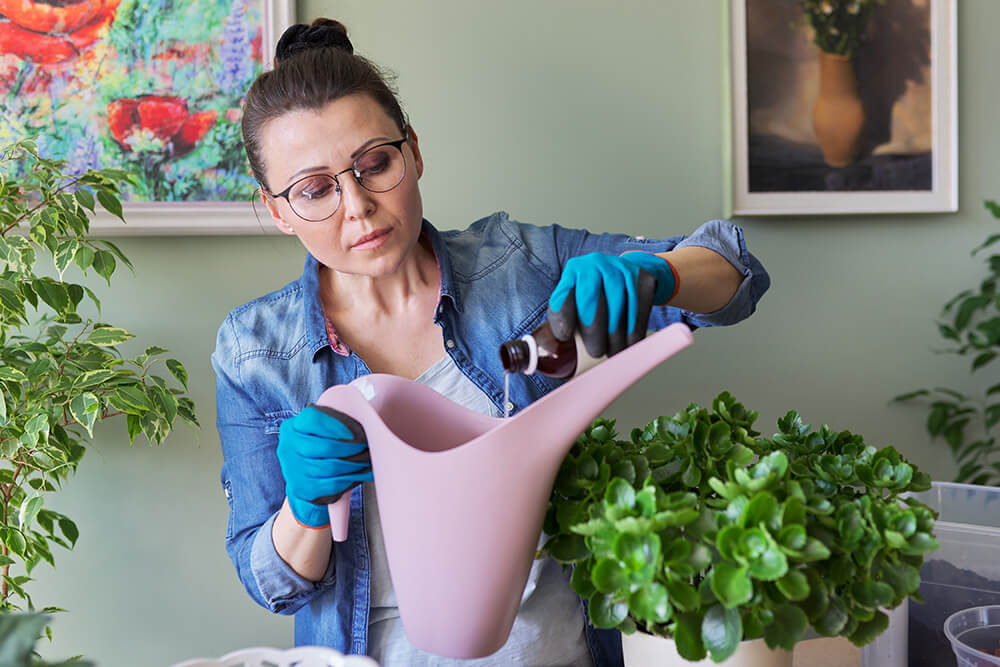
What can 3% Hydrogen Peroxide Do?
3% hydrogen peroxide is a multi-use solution often selected for keeping household areas like kitchen counters, chopping boards, and bathroom amenities in pristine condition. It is equally effective for lifting stains from a variety of textiles including apparel, soft furnishings, and floor coverings, as well as on more solid surfaces like tiles and grout lines.
Outside of its domestic applications, this compound is frequently used to maintain the cleanliness of equipment and tools. Additionally, it offers a more environmentally conscious choice compared to traditional chemical treatments in garden care. Given its versatility, it stands as a go-to option for a wide array of tasks aimed at maintaining a clean and orderly environment.
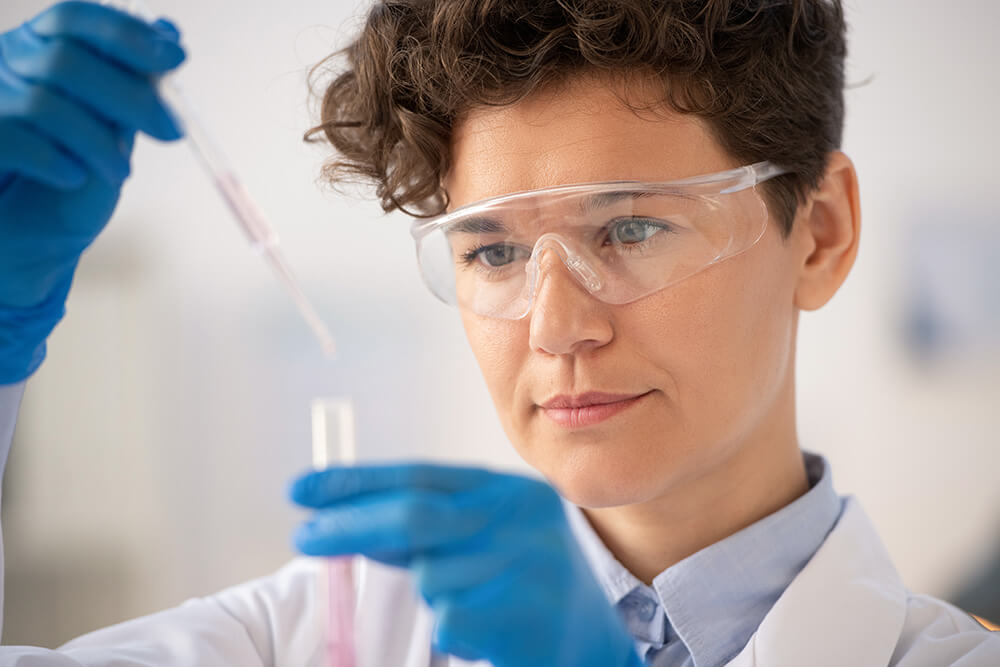
How does Hydrogen Peroxide 3 percent Work?
3% hydrogen peroxide operates as an effective oxidizing agent owing to its additional oxygen molecule. When it interacts with organic substances like various microorganisms, it decomposes to liberate this extra oxygen. This leads to a chemical response that neutralizes these microscopic elements.
This phenomenon, known as oxidation, efficiently manages unwanted germs and microscopic life forms. Furthermore, hydrogen peroxide can tackle and eliminate stains. The extra oxygen molecules interact with, and degrade, the compounds responsible for the stains, resulting in a cleaner surface.
Table of Contents
Here's a list of some frequently asked questions about 3% Hydrogen Peroxide.
How is 3% hydrogen peroxide made?
3% hydrogen peroxide is typically made by combining water and 35% food-grade hydrogen peroxide in the appropriate ratio. This results in a solution that is about 3% hydrogen peroxide and 97% water.
Is hydrogen peroxide 3 percent safe for plants?
Hydrogen peroxide 3% can be used to water plants in small amounts, but excessive use can harm the plants. It is important to dilute the solution properly and avoid contact with the leaves and stems of the plants.
Is 3% hydrogen peroxide effective for cleaning?
Yes, 3% hydrogen peroxide is effective for cleaning many surfaces and items, including countertops, floors, and bathroom fixtures. It can also be used as a natural alternative to bleach for laundry and disinfecting.
Is hydrogen peroxide 3% safe for pets?
In small amounts and when used properly, hydrogen peroxide 3% can be safe for pets. It is commonly used to induce vomiting in dogs after they have ingested something toxic. However, it should not be used on cats or other animals without first consulting a veterinarian.
How long does 3% food grade hydrogen peroxide last?
When stored properly, 3% food grade hydrogen peroxide can last for up to a year before it begins to degrade and lose effectiveness.
How does hydrogen peroxide 3% bleach hair?
Hydrogen peroxide 3% can bleach hair by breaking down the melanin pigments in the hair shaft, resulting in a lighter color.
How does food grade 3% peroxide disinfect fruits and vegetables?
Food grade 3% hydrogen peroxide can be used to disinfect fruits and vegetables by soaking them in a diluted solution for a few minutes before rinsing them thoroughly with water. It is important to follow proper dilution instructions and avoid contact with any harmful chemicals.
What is the chemical formula for 3% hydrogen peroxide?
The chemical formula for hydrogen peroxide is H2O2, meaning that it contains two hydrogen atoms and two oxygen atoms. The percentage refers to the concentration of the solution, not its chemical formula.
How do I dilute food grade 3% peroxide?
To dilute food grade 3% hydrogen peroxide, simply mix one part hydrogen peroxide with roughly 11 parts water if you are starting with a 35% solution.
Can I use hydrogen peroxide 3% to clean my jewelry?
Hydrogen peroxide 3% can be used to clean jewelry, but it is important to avoid using it on delicate or porous materials such as pearls, opals, or wood. It is also important to rinse the jewelry thoroughly with water after cleaning to avoid any residue buildup.
Is 3% hydrogen peroxide safe for hair?
While hydrogen peroxide 3% can be used to lighten hair, it can also cause damage and dryness if used too frequently or in high concentrations.
Can I use hydrogen peroxide 3% to disinfect surfaces?
Yes, hydrogen peroxide 3% can be used to disinfect many surfaces and items, including kitchen counters, bathroom fixtures, and cutting boards.
Everyday Uses for 3% Hydrogen Peroxide
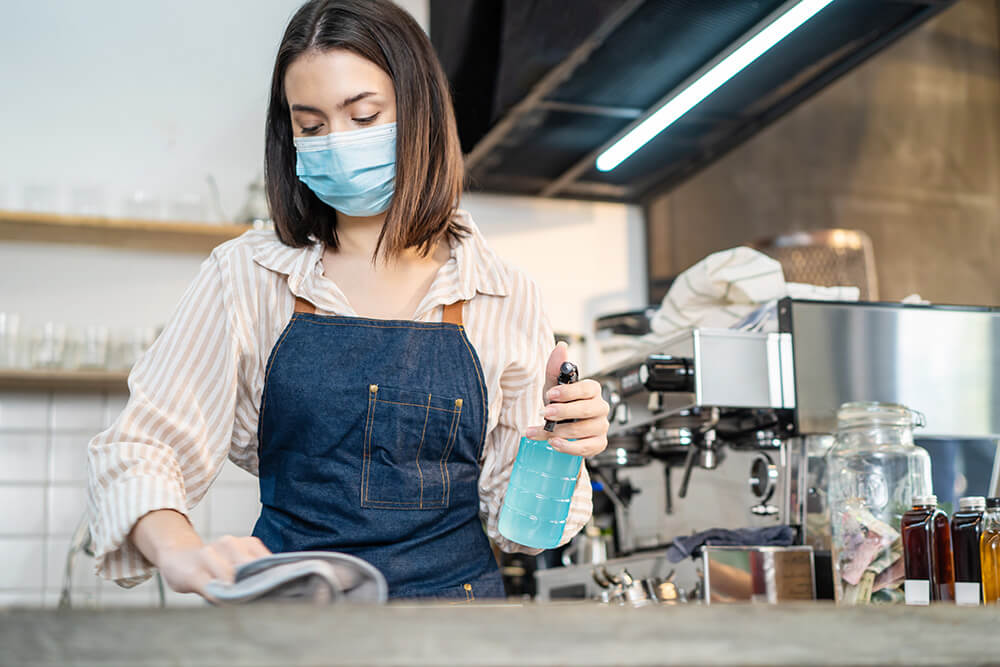
Hydrogen Peroxide: An Effective Cleaning and Sanitizing Agent
Hydrogen peroxide is a multifaceted solution frequently employed in homes, healthcare facilities, and various other environments for its cleaning capabilities. Its proficiency in neutralizing a wide array of microorganisms makes it a favored option for maintaining the cleanliness of frequently handled surfaces like kitchen counters, door handles, and other areas that see a lot of contact.
-
Gym equipment:
Gyms can be breeding grounds for bacteria and germs. Use hydrogen peroxide to clean and disinfect gym equipment, including weights, yoga mats, and cardio machines. -
Car interiors:
Cars can be a hotbed of germs and bacteria, especially on high-touch surfaces like steering wheels, door handles, and gear shifts. Use hydrogen peroxide to clean and disinfect the interior of your car. -
Pet areas:
et areas, including cages, litter boxes, and toys, can harbor bacteria and germs. Use hydrogen peroxide to disinfect these areas and keep your pets healthy. -
Electronics:
Electronic devices, such as computer keyboards, remote controls, and smartphones, can be difficult to clean and disinfect without damaging them. Hydrogen peroxide is a safe and effective solution for sanitizing these devices. -
Outdoor furniture:
Outdoor furniture can be exposed to harsh weather conditions, which can lead to the growth of mold and mildew. Use hydrogen peroxide to clean and disinfect outdoor furniture, including cushions, umbrellas, and tables.
Hydrogen Peroxide: The Ultimate Stain Removal Solution
-
Removing Stains from Glass Surfaces:
Hydrogen peroxide can effectively remove stains from glass surfaces such as mirrors and windows. Simply spray a 3% solution onto the surface and wipe away with a clean cloth. For metal surfaces, hydrogen peroxide can remove rust stains or tarnish. Apply the solution to the affected area and let it sit for a few minutes before wiping away with a damp cloth. -
Keep Your Bathroom Clean and Sanitized:
In bathrooms, hydrogen peroxide can be used to remove tough stains on toilet bowls, sinks, and shower tiles. It can also help to prevent the growth of mold and mildew. Apply a 3% solution and let it sit for a few minutes before scrubbing away with a brush or sponge. -
Restoring Wooden Surfaces with Hydrogen Peroxide:
When it comes to wooden surfaces, hydrogen peroxide can be used to remove stains or discoloration. Apply the solution to the affected area and let it sit for a few minutes before wiping away with a clean cloth. However, be careful not to leave the solution on the wood for too long as it can cause damage. -
Reviving Outdoor Surfaces with Hydrogen Peroxide:
For outdoor surfaces such as decks or patio furniture, hydrogen peroxide can be used to remove stains and discoloration caused by dirt or mildew. Apply the solution and let it sit for a few minutes before scrubbing away with a brush or sponge. Rinse with water and allow to air dry. -
Cleaning Metal Surfaces:
Hydrogen peroxide is an effective cleaner for metal surfaces as it can remove stains and grime without damaging the surface. It can remove rust stains from metal tools and equipment, as well as grease and oil stains from metal surfaces. Simply apply a small amount of hydrogen peroxide onto the affected area, let it sit for a few minutes, then wipe it away with a clean cloth.
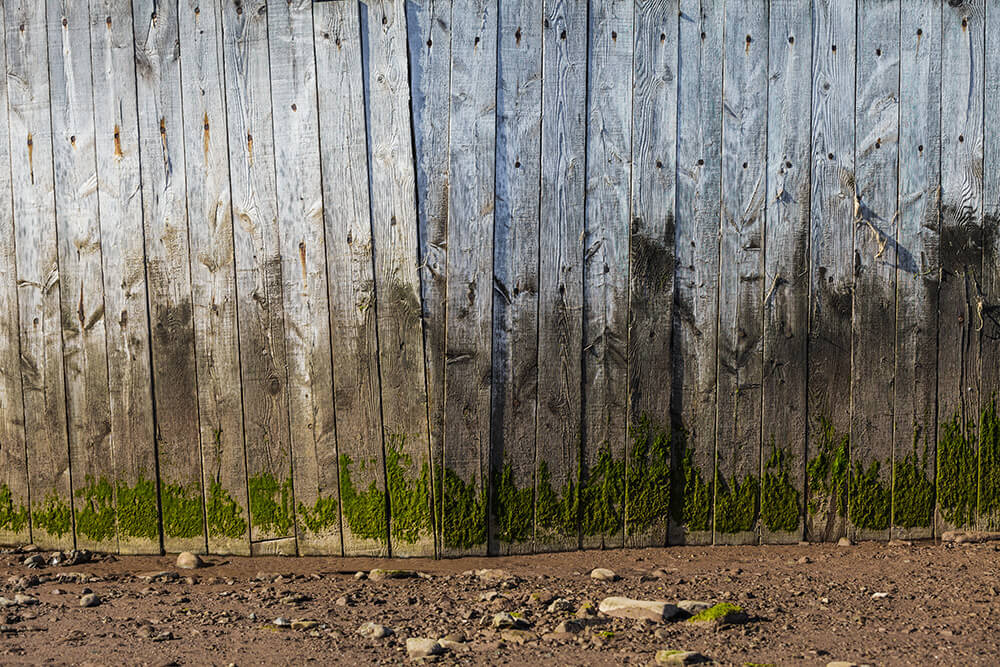
Hydrogen peroxide is an effective solution for removing stubborn stains on a variety of surfaces. It can remove stains from glass surfaces like mirrors and windows by simply spraying a 3% solution and wiping away with a clean cloth. For wood surfaces, it can eliminate stains or discoloration by applying the solution to the affected area and wiping it away after a few minutes. Outdoor surfaces like decks or patio furniture can also be cleaned with hydrogen peroxide by applying the solution and scrubbing away with a brush or sponge. When it comes to metal surfaces, hydrogen peroxide can remove rust stains or tarnish by applying the solution and letting it sit for a few minutes before wiping away with a damp cloth.
Beyond the Basics: Unconventional Ways to Use Hydrogen Peroxide
-
Jewelry cleaner:
Hydrogen peroxide can be used to clean and brighten tarnished jewelry. Soak the jewelry in a mixture of equal parts hydrogen peroxide and water, then rinse and dry. -
Hair lightener:
For a natural hair lightening effect, mix hydrogen peroxide with water and spray onto hair before going out in the sun. This can gradually lighten hair over time. -
Plant fertilizer:
Hydrogen peroxide can be used as a natural fertilizer for plants. Mix 1 tablespoon of hydrogen peroxide with 1 gallon of water and water plants with the mixture once a week. -
Removing soap scum from shower curtains:
Mix equal parts of hydrogen peroxide and water in a spray bottle. Spray the solution onto the shower curtain and let it sit for 10-15 minutes. Rinse with water and let it air dry.
Safety First: Tips for Using Hydrogen Peroxide at Home and Work

-
Proper Storage of Hydrogen Peroxide to Avoid Accidents:
Store hydrogen peroxide in a cool, dry place away from direct sunlight and sources of heat, as exposure to heat and light can cause it to break down into water and oxygen, reducing its effectiveness. -
Use Protective Equipment When Handling Hydrogen Peroxide:
Always wear protective gloves and eyewear when handling hydrogen peroxide to prevent skin and eye irritation. -
Do Not Mix Hydrogen Peroxide with Other Chemicals:
Never mix hydrogen peroxide with other cleaning products or chemicals, such as bleach or ammonia, as this can produce toxic gases. -
Follow Dilution Guidelines for Safe Use:
Follow the recommended dilution ratios and usage instructions on the product label to avoid overexposure and potential health hazards. -
Keep Hydrogen Peroxide Away from Children and Pets:
Hydrogen peroxide can be toxic if ingested or inhaled in large quantities, and can cause irritation or burning if it comes in contact with the skin. It should be kept out of reach of children and pets to prevent accidental ingestion or exposure. -
First aid:
In case of accidental ingestion or exposure to hydrogen peroxide, immediate first aid measures should be taken. If ingested, do not induce vomiting and instead give small amounts of water to drink. If it gets in the eyes, rinse thoroughly with water for at least 15 minutes while holding the eyelids open. If it comes in contact with the skin, rinse the affected area with water and remove any contaminated clothing. Seek medical attention if necessary, especially if the exposure was significant or symptoms such as breathing difficulties or chest pain occur.


